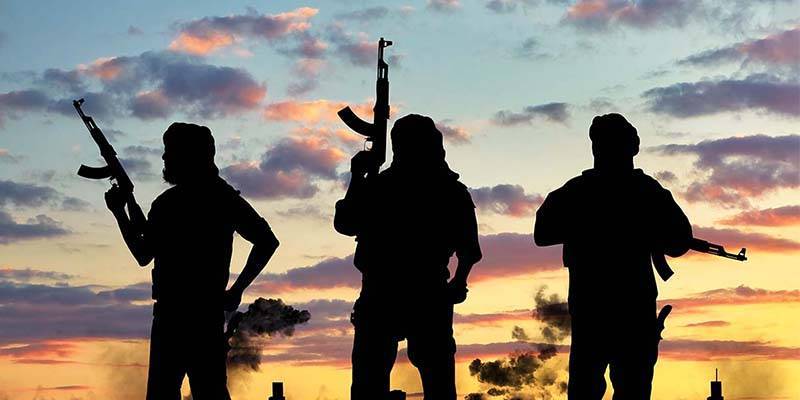There are two major problems with history. Firstly, the historian has to rely on sources in developing a narrative, since history recounts the past and he or she is not witness to that time frame. Secondly, objectivity is the first casualty, however truthful the historian may be, because the biases nurtured over the years inevitably affect the outcome. Nevertheless, I grew up in this era and will try to shed light on it as objectively as possible.
The Zia regime has been criticised for many valid reasons, and the more one studies this period and the demons it created, the more depressing it becomes. From a relatively peaceful and secular country, Pakistan transformed into a land of extremism. Yet one needs to appreciate the threat we faced back then in order to make a fruitful analytical exercise for today’s generation.
It was in March 1980, during a class break at St Anthony’s, when two of my classmates—both sons of army officers—told us that Pakistan faced a serious threat if the Soviet Union invaded. We were only twelve‑ or thirteen‑year‑old children, and the fear of the Russian bear was palpable. When I came home and asked my father, a retired army officer, he tried to comfort me as fathers do, but I overheard him telling my mother, “Let us pray the Soviets stop at Afghanistan.” That was the atmosphere. If General Zia and his government, backed by the international community, had not helped defeat the Soviet Union, the history of Pakistan would have been very different. So let us acknowledge this positive aspect of the Zia regime in safeguarding Pakistan from an Armageddon.
The Afghan jihad began like a sputtering carburettor and gained traction after Ronald Reagan became President of the United States. It led to the mushrooming of madrasas—especially of the Deobandi fiqh—the proliferation of weapons, particularly the Kalashnikov, the birth of non‑state actors revered for their passion to protect Islam and Pakistan against ‘infidels’, the introduction of Islamic laws, the enforcement of religious edicts under pain of punishment, and many other measures taken in the name of religion.
The years 1980–88 can be termed the worst era in our history’s mosaic of terrorism because both sectarian and ethnic violence took root for different reasons during this time
One incident, however, stands apart. The imposition of the Zakat and Ushr Ordinance on 20 June 1980 sparked a major protest by the Shia community. On 5 July 1980, thousands of Shias rallied in Islamabad under the banner of the TNFJ, compelling the government to backtrack and grant them exemption. This was the first large‑scale sectarian mobilisation in Pakistan’s history and, coming a year after the Iranian Revolution, had added impetus.
This episode alarmed the Deobandis and Wahhabis. Fearing Shia ascendancy, the Deobandis, led by Maulana Haq Nawaz Jhangvi, formed Sipah‑e‑Sahaba Pakistan in 1985, the first sectarian organisation to challenge Shia communities openly. Thus began Shia–Sunni sectarian militancy. It spread across Pakistan, turning the previously peaceful month of Muharram into a flashpoint requiring massive deployments of law‑enforcement personnel—a practice that, regrettably, continues today. It was also the first time police officers were routinely stationed at mosques and imambargahs.
The country’s first major Shia–Sunni riots erupted in Karachi during Muharram in 1983, leaving at least sixty people dead. Further disturbances followed over the next three years, spreading nationwide. By 1986, Jhang and Bhakkar had become hotbeds of violence, marked by targeted assassinations of Shia and Sunni clerics. Many believed Pakistan had become a proxy battleground for Saudi Arabia and Iran, the former supporting Deobandis and Wahhabis, the latter the Shias. The worst incident occurred in Gilgit in May 1988, triggered by a dispute over the moon‑sighting, and resulted in hundreds of deaths. This religious divide has haunted us ever since.
One must remember that the Afghan jihad attracted fighters from across the Muslim world and was supported by the West, led by the United States. Pakistan served as their home base—an often‑forgotten fact today. Crucially, al‑Qaeda was founded by Osama bin Laden in Peshawar in 1988 as a broad logistical network for these fighters. Pakistan thus became the breeding ground of sectarian militancy as a direct offshoot of the Afghan jihad.
The second violent contour that developed in this period was ethnic. The Muhajir Qaumi Movement (MQM) evolved from the All‑Pakistan Muhajir Students Organisation (APMSO), founded in 1978 by Altaf Hussain to represent Urdu‑speaking Muhajirs. The party later became the Muttahida Qaumi Movement in 1997, dropping the term “Muhajir”. Its strongholds were the urban areas of Sindh, especially Karachi and Hyderabad.
On 15 April 1985 the death of a twenty‑year‑old student, Bushra Zaidi, who was hit by a bus driven by a Pathan, sparked a new chapter of ethnic violence. Rioting spread throughout Karachi, reflecting a deep‑rooted socio‑economic malaise. Officially fifty people were reported dead and more than three hundred injured, although unofficial estimates put fatalities at two hundred.
Reportedly over 2,600 ethnic riots occurred between 1985 and 1988. Terrorism reared its ugly head as Muhajirs, Pathans, Sindhis and, in some cases, Punjabis all engaged in violence. A hapless state looked on. Weak political leadership and the see‑saw between president and prime minister meant that a situation requiring mature, swift action was badly mishandled. Violence escalated, and ordinary people of every ethnicity suffered, paying the price in blood.
The years 1980–88 can be termed the worst era in our history’s mosaic of terrorism because both sectarian and ethnic violence took root for different reasons during this time. The small saplings we allowed to be planted quickly grew into terrifying behemoths that have haunted us since—and may continue to do so for the foreseeable future.
